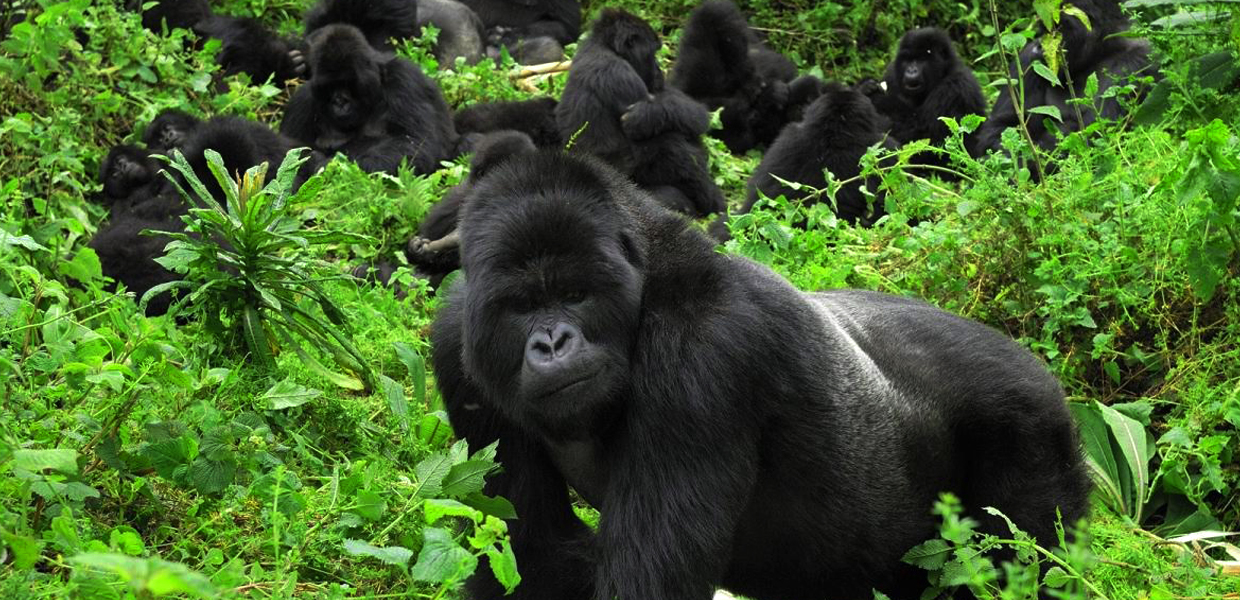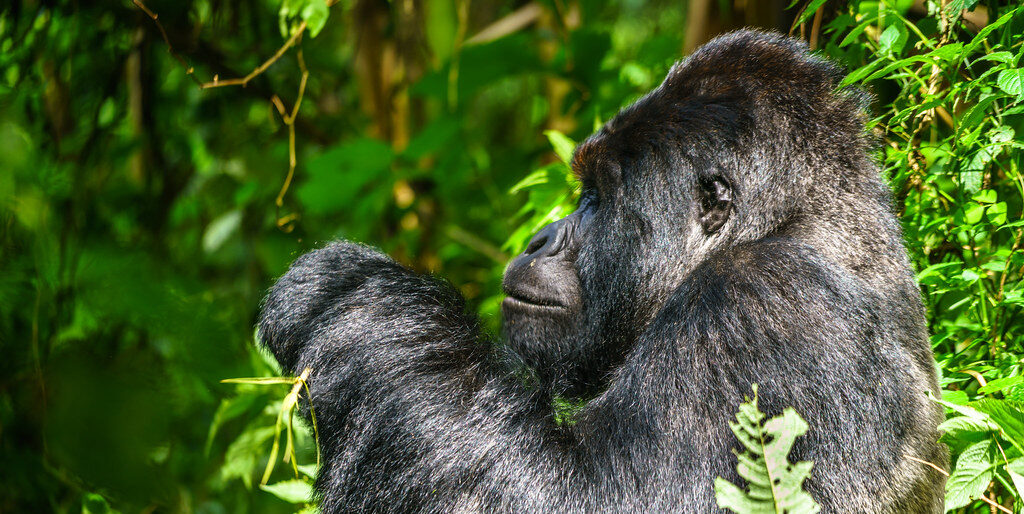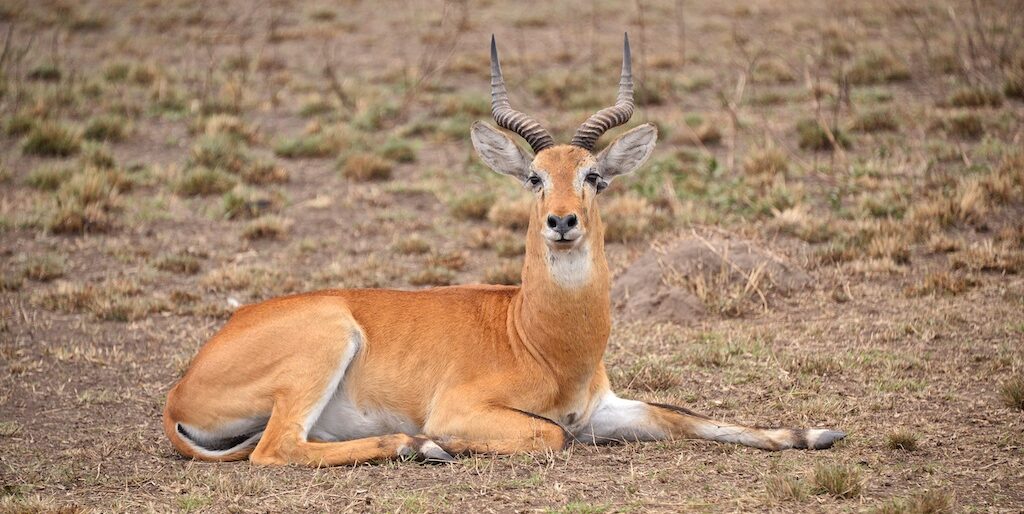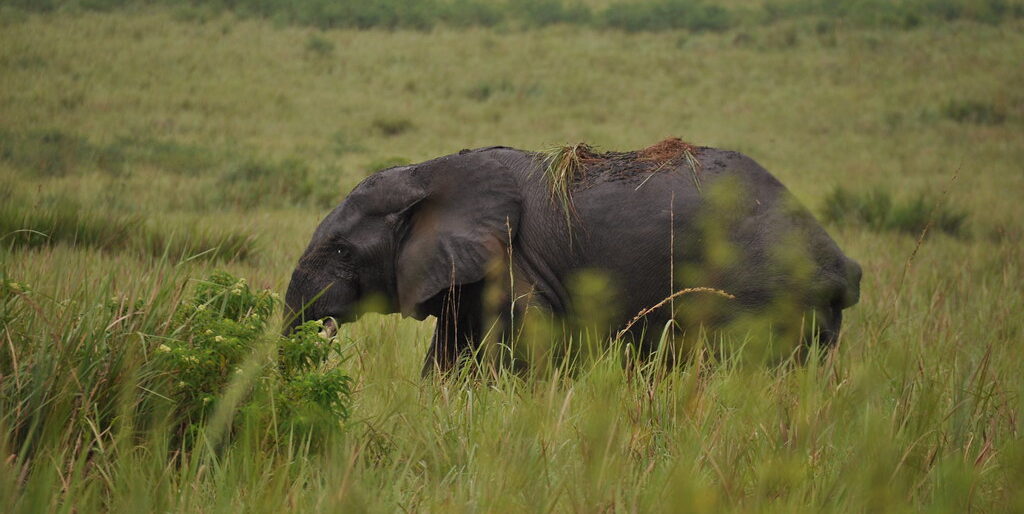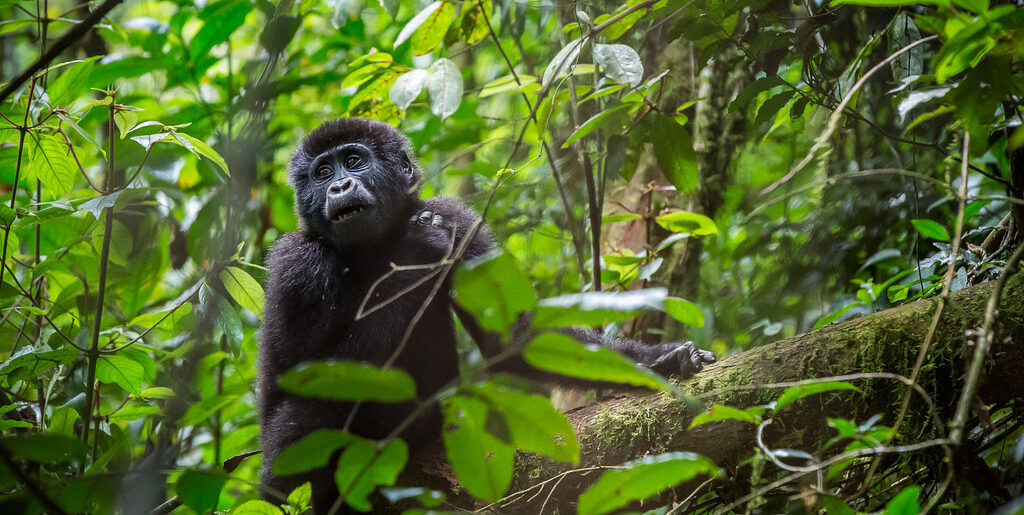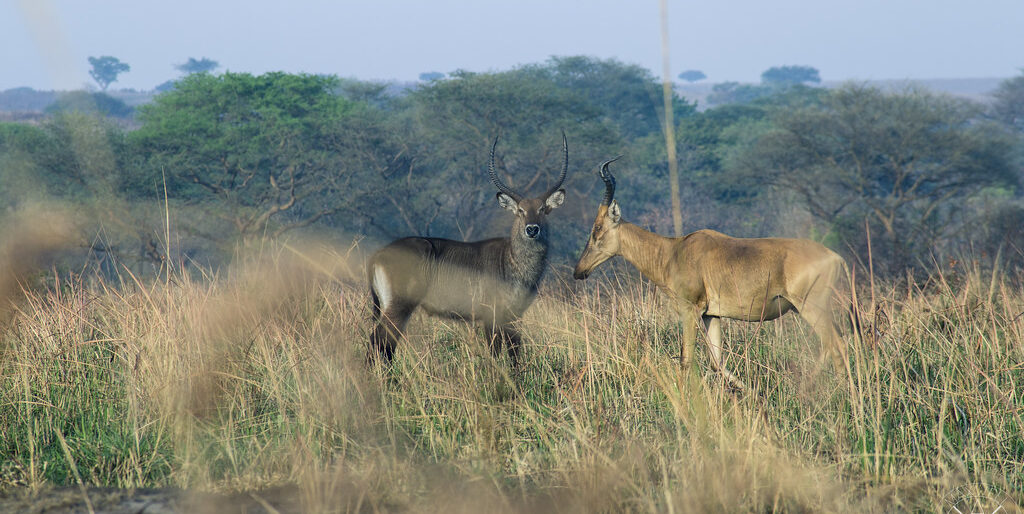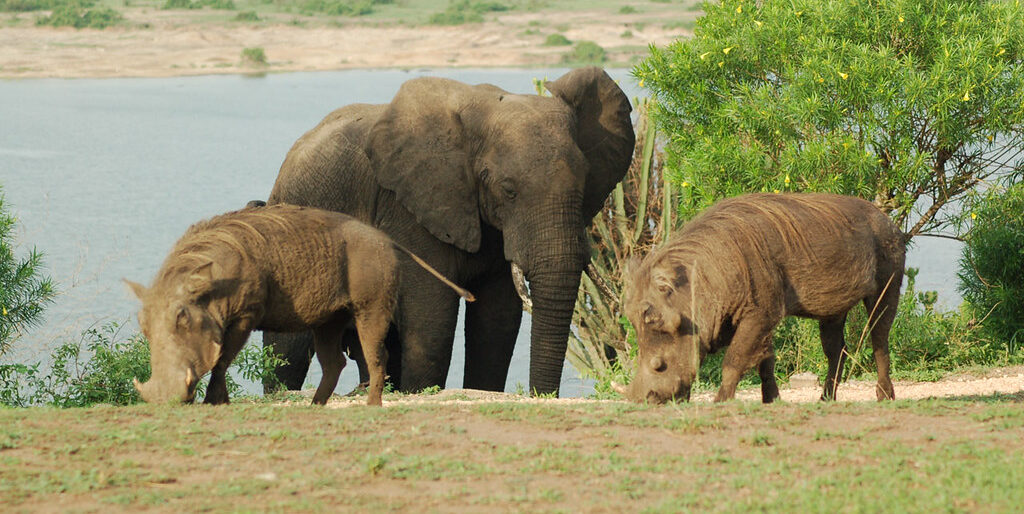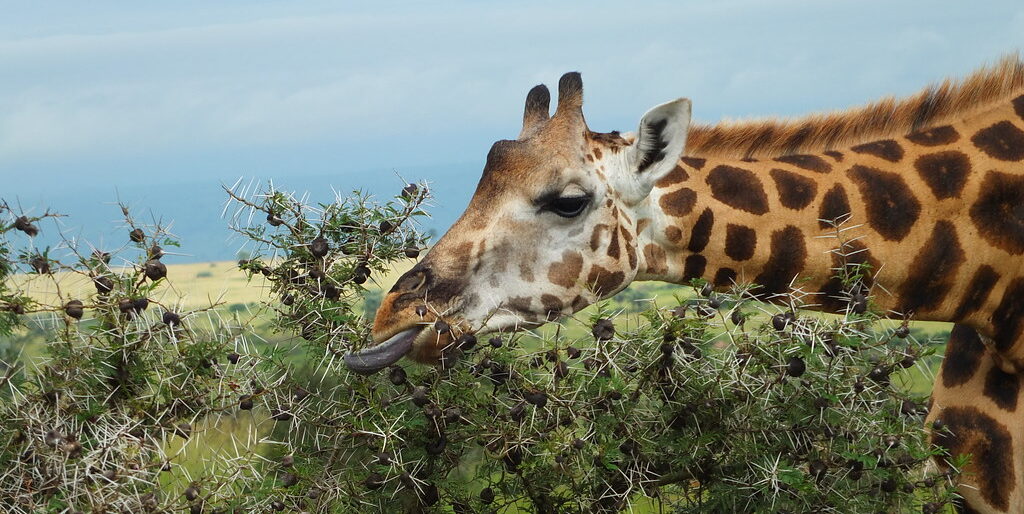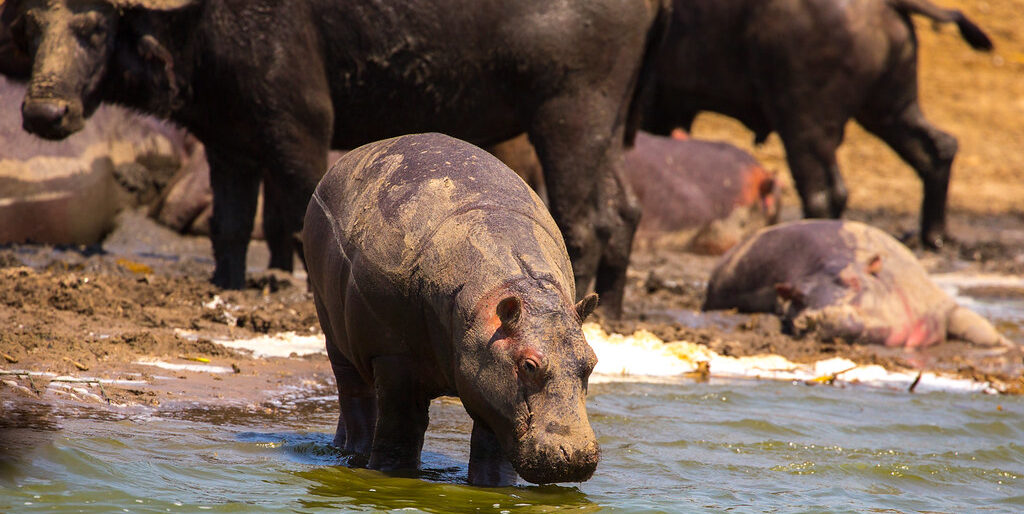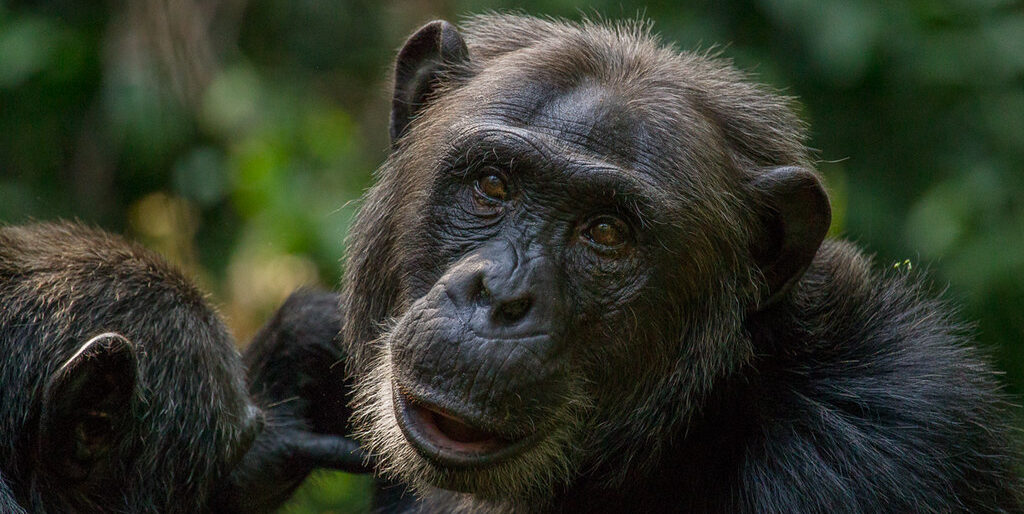Safaris in Uganda visits a lush, green paradise that offers diverse landscapes and wildlife. Visitors can trek gorillas in Bwindi Forest to see gorillas in the wild, go on safari in Queen Elizabeth National Park, or explore the mighty River Nile. Uganda also boasts stunning lakes like Lake Victoria and Lake Bunyonyi. The country’s national parks are teeming with wildlife, including lions, elephants, and chimpanzees. With a mix of adventure and relaxation, Uganda is an ideal destination for nature lovers.
Safaris and excursions in Uganda offer a thrilling and diverse experience for cultural explorers, nature enthusiasts, and wildlife enthusiasts. Uganda is renowned for its gorilla trekking experiences in Bwindi Impenetrable Forest and Mgahinga Gorilla National Park, where visitors can experience up-close encounters with endangered mountain gorillas in their natural habitat. In addition to gorillas, the nation is home to a diverse array of wildlife. Visitors can observe the Big Five and other distinctive species during game excursions in Queen Elizabeth National Park, Murchison Falls National Park, and Kidepo Valley. Uganda is also renowned for its bird observing, particularly in the vicinity of Lake Mburo and the Mabamba Swamp. Moreover, the country’s breathtaking landscapes, such as the Nile River and the Rwenzori Mountains, provide a variety of activities, such as boat cruises, rafting, and trekking. Uganda is a safari destination that is truly immersive, as cultural excursions offer a deeper connection to its vibrant heritage.
Best Uganda Safari Packages
Best Uganda Safari Destinations
Uganda safaris blend many ecosystems within one borders, unlike many other African safari locations, including dense rainforests where tourists go gorilla trekking in the jungle, sprawling savannas hobouring wildlife, wetlands, and mountainous regions. This ecological diversity supports a range of species, from the famous “Big Five” animals (lion, elephant, buffalo, leopard, and rhino) to rare and unique primates such as the endangered mountain gorilla and chimpanzee.
One of the standout features of a Ugandan safari is its balance of adventure and accessibility. Uganda’s national parks are less crowded than other African safari destinations, providing visitors with a more intimate encounter with the land’s raw beauty and wildlife. Its national parks and reserves are well-protected, and recent efforts have focused on sustainable tourism, ensuring that visitors can enjoy the country’s treasures responsibly.
In the following sections, we will explore five of the best safari destinations in Uganda, each offering something distinct and memorable.
1. Murchison Falls National Park
Murchison Falls National Park is Uganda’s largest and oldest national park, covering over 3,800 square kilometres of diverse ecosystems, from lush forests to sweeping savannas and riverine woodlands. Known as the “crown jewel” of Uganda’s wilderness, Murchison Falls offers visitors a rich safari experience combining breathtaking landscapes and impressive wildlife diversity.
The park is named after the iconic Murchison Falls, where the mighty Nile River plunges over a 43-meter-high rock face through a narrow gorge, creating one of Africa’s most potent natural spectacles. The thunderous falls are a central highlight for visitors, offering boat trips to witness the falls up close and spectacular photography and birdwatching opportunities. The Nile itself serves as the park’s lifeline, attracting various animals to its banks and making it a prime area for wildlife spotting.
Murchison Falls National Park is home to the renowned “Big Four” (elephants, lions, buffaloes, and leopards). While rhinos are not found in the park, visitors can see them at the nearby Ziwa Rhino Sanctuary before or after their safari. Game drives in the park provide opportunities to see these animals in their natural habitats and other species like Rothschild giraffes, hartebeests, bushbucks, and warthogs. The park is also home to one of Africa’s largest hippo and crocodile populations, especially along the Nile, where they can often be observed basking on the riverbanks.
For bird watchers, Murchison Falls is a paradise. Over 450 bird species, including the rare shoebill stork, a highly sought-after sighting, can be found here. Guided birdwatching tours are available for those interested in spotting these rare and fascinating birds. The park also offers unique activities, such as night drives, giving visitors a rare chance to see nocturnal species in action.
2. Queen Elizabeth National Park
Queen Elizabeth National Park in western Uganda is one of the country’s most popular and ecologically diverse parks. Spanning over 1,900 square kilometres, the park is celebrated for its relief, which includes volcanic craters, savanna grasslands, wetlands, and dense forests. These diverse habitats make Queen Elizabeth National Park an ideal destination for travellers who witness various wildlife species within a single safari.
The park is especially famous for its tree-climbing lion population in the Ishasha sector. These unique lions are known to perch on the branches of fig and acacia trees—a behaviour rarely seen in lions elsewhere. The reasons behind this behaviour remain a subject of speculation, but some theories suggest it helps the lions escape the heat on the ground or avoid insect bites. Regardless of the reason, witnessing these magnificent predators lounging in trees is a remarkable sight and a highlight of any visit to Queen Elizabeth National Park.
Beyond the tree-climbing lions, Queen Elizabeth National Park is home to a vast range of animals, including elephants, buffaloes, leopards, and several antelope species. Game drives offer numerous opportunities to see these animals up close, and the open landscapes make it easy to spot wildlife. The park’s Kazinga Channel, a natural waterway connecting Lake Edward and Lake George, draws one of Africa’s densest concentrations of hippos. Boat cruises along the Kazinga Channel provide an ideal way to view these hippos, Nile crocodiles, and bird species that flock to the water’s edge.
Birdwatching is a significant attraction in Queen Elizabeth National Park, home to over 600 bird species, making it one of Africa’s most bird-rich protected areas. Notable species include the African fish eagle, flamingos, kingfishers, and the rare papyrus gonolek. The park’s distinct ecosystems, from the savannas to the wetlands, attract birds from various regions, providing unique birdwatching opportunities throughout the year.
3. Bwindi Impenetrable National Park
Bwindi Impenetrable National Park, a UNESCO World Heritage Site, is a remarkable destination known for its dense forests, mountainous terrain, and, most notably, its population of endangered mountain gorillas. Covering approximately 331 square kilometres in southwestern Uganda, Bwindi is one of the few places visitors can enjoy the rare and awe-inspiring gorilla trekking experience. This unique opportunity draws thousands of visitors annually, making Bwindi a must-visit for those seeking a profound wildlife encounter.
The forest is ancient and diverse, dating back over 25,000 years. It supports over 400 plant species and a wealth of animal life, from primates to small mammals and over 350 bird species. However, the mountain gorillas stand out as Bwindi’s main attraction. The park is home to approximately half of the world’s remaining mountain gorilla population, making it one of the most critical areas for gorilla conservation.
Gorilla trekking in Bwindi is a rigorous but enriching activity. Trekkers are guided by experienced rangers through dense jungle terrain, traversing steep, muddy paths to locate one of the gorilla families habituated to human presence. The trek can range from one to several hours, depending on the location of the gorillas, but the anticipation adds to the adventure. Once trekkers reach the gorillas, they can spend a precious hour observing these gentle giants as they interact, play, and go about their daily routines. The experience is humbling and exhilarating, offering a close-up view of one of humanity’s closest relatives in their natural habitat.
Beyond gorillas, Bwindi Impenetrable National Park is also home to several other primate species, such as black-and-white colobus monkeys, red-tailed monkeys, and L’Hoest’s monkeys. Birdwatchers will find Bwindi particularly appealing due to its rich avian diversity, including species like the African green broadbill and Shelley’s Crimsonwing, which are rare and highly sought-after by birding enthusiasts.
4. Kibale Forest National Park
Kibale Forest National Park, located in southwestern Uganda, is a celebrated biodiversity hotspot renowned for its primate population, particularly chimpanzees. Spanning over 795 square kilometres, Kibale’s dense, tropical rainforest is home to thirteen primate species, earning it the reputation as East Africa’s “Primate Capital.” For travellers interested in primate tracking, birdwatching, and rainforest exploration, Kibale offers a truly immersive experience.
Chimpanzee tracking is the most popular activity in Kibale. Visitors can join guided treks led by expert trackers adept at locating chimpanzee troops within the forest. Unlike the mountain gorillas in Bwindi, chimpanzees are more dynamic and vocal, often leaping from tree to tree and emitting loud calls reverberating through the forest. Trekkers usually spend an hour observing these energetic primates as they socialise, groom, and feed, gaining a fascinating glimpse into their complex social structures and behaviours. For those interested in a more in-depth experience, Kibale also offers a Chimpanzee habitat experience, which allows visitors to spend an entire day with the chimps and learn more about their daily lives.
In addition to chimpanzees, Kibale Forest National Park supports a range of other primate species, including red colobus monkeys, black-and-white colobus, blue monkeys, grey-cheeked mangabeys, and the rare L’Hoest’s monkey. This diversity makes Kibale one of the wealthiest primate ecosystems in Africa. The park also shelters a variety of other mammals, such as forest elephants, bush pigs, and several species of antelope.
Kibale is a significant destination for birdwatchers, with over 370 recorded bird species. The park’s unique combination of forest and wetland habitats attracts various colourful and rare birds, including the African pitta, green-breasted pitta, crowned eagle, and great blue turaco. Many of these birds are endemic to Uganda, making Kibale an exceptional spot for those eager to add rare species to their birding lists.
5. Kidepo Valley National Park
Kidepo Valley National Park, located in Uganda’s northeastern region near the borders with Kenya and South Sudan, offers an extraordinary and remote safari experience. Covering approximately 1,442 square kilometres, Kidepo is Uganda’s most isolated national park, a hidden gem that feels untouched by time and remains relatively unknown to mass tourism. This rugged wilderness is known for its vast, open landscapes, dramatic mountain ranges, and an impressive variety of wildlife that rivals more famous safari destinations in Africa.
Kidepo’s remoteness is part of its allure, appealing to adventurous travellers who wish to explore Africa’s wild, untouched beauty. The park is set against semi-arid plains and mountains, including the stunning Morungole Range. The Narus and Kidepo Valleys are the primary areas for wildlife spotting, with the Narus Valley being particularly rich in animal life due to the permanent water sources it provides, especially during the dry season.
The park is home to a remarkable diversity of wildlife, including many species not commonly found in other parts of Uganda. Visitors can see large herds of buffaloes, elephants, zebras, and giraffes. Kidepo also has a healthy population of big cats, including lions, cheetahs, and leopards. The park’s isolation has allowed these populations to thrive without excessive human interference, and game drives often provide close encounters with these majestic predators. Cheetahs, in particular, are a unique attraction here, as they are rarely seen in other Ugandan parks.
Kidepo Valley National Park is also known for its rich avian life, boasting over 475 bird species, including the Karamoja apalis, which is endemic to the region. Birdwatchers can enjoy spotting various raptors, including the Verreaux’s eagle, pygmy falcon, and Egyptian vulture. The rugged terrain and open plains make birdwatching especially rewarding, as sightings are often clear and unobstructed.
In addition to wildlife viewing, Kidepo offers unique cultural interactions with the Karamojong and Ik tribes, who have lived in the area for centuries. Visiting these communities provides insight into the distinctive customs, dress, and lifestyles of the Karamojong, who are known for their resilience and semi-nomadic pastoral lifestyle. The Ik people, who live in the Morungole Mountains, are one of Uganda’s most minor ethnic groups, and their secluded way of life offers visitors a rare glimpse into a culture shaped by isolation and tradition.
Planning Your Ugandan Safari: Tips and Travel Information
A well-planned safari is critical to making the most of Uganda’s diverse and unforgettable wildlife experiences. Here, we cover essential travel tips and advice to help visitors enjoy Uganda’s parks to the fullest, from choosing the right time to visit to selecting accommodations and understanding necessary permits.
1. Best Time to Visit
- Uganda’s climate is generally tropical, with two main rainy seasons (March to May and September to November) and two dry seasons (December to February and June to August). The dry seasons are typically the best times to visit for safari, as wildlife is easier to spot near water sources, and forest trails are more accessible for activities like gorilla and chimpanzee trekking.
- Gorilla trekking is available year-round in Bwindi Impenetrable National Park. Still, the dry months offer a more comfortable experience due to reduced mud and more straightforward navigation through the dense forest.
2. Required Permits and Reservations
- Gorilla trekking permits are mandatory for visitors wishing to track gorillas in Bwindi Impenetrable National Park. These permits are limited and must be booked in advance, as they are in high demand. The Uganda Wildlife Authority (UWA) manages permit issuance, and it is advisable to book through reputable tour operators to ensure availability.
- Chimpanzee tracking permits are required for Kibale Forest National Park, which is also best booked in advance. Different parks may have distinct regulations and fees, so visitors should plan accordingly and confirm requirements before travel.
3. Choosing Accommodations
- Uganda offers a range of safari accommodations, from luxury lodges to more budget-friendly camps. As popular tourist destinations, Murchison Falls and Queen Elizabeth National Parks have options catering to all levels of comfort. In more remote areas like Kidepo Valley, choices may be limited, and travellers should expect a more rustic experience that immerses them fully in the natural surroundings.
- Many lodges operate eco-friendly practices and partner with local communities, providing travellers with sustainable options that support conservation and responsible tourism.
- Packing Essentials for Your Safari
- Light, neutral-coloured clothing is recommended to blend into the environment, while comfortable walking shoes are essential for trekking and nature walks. Long-sleeved shirts and pants protect against insects and thorny vegetation, especially in forested parks like Bwindi.
- Key items include binoculars, a good camera with a zoom lens, insect repellent, and sunscreen. Visitors should prepare for cool mornings and warm afternoons in Uganda’s varied landscapes, so layering clothing is advisable.
5. Respecting Wildlife and Local Culture
- Uganda’s parks emphasise conservation, and visitors must adhere to ethical wildlife viewing practices. Keeping a safe distance from animals, staying within designated areas, and avoiding loud noises are vital to ensure that wildlife remains undisturbed.
- Respect for local customs and cultures is equally important. Uganda is home to diverse communities, each with unique traditions. Showing respect and openness towards local customs through attire, greetings, or interactions enriches the travel experience.
6. Engaging Local Guides and Tours
- Guided tours enhance the safari experience, as local guides offer invaluable knowledge of each park’s wildlife, history, and ecology. They also play a crucial role in safety and guide activities like gorilla trekking, ensuring a memorable and informative adventure.
- Many guides are also fluent in English, and most lodges and tour operators offer bilingual services to cater to international travellers.
7. Health and Safety Considerations
- Uganda requires proof of yellow fever vaccination, and malaria prophylaxis is recommended for all travellers. It’s wise to consult a travel doctor regarding vaccinations and medications before the trip.
- Basic travel insurance that includes medical coverage is recommended, particularly for those participating in physically demanding activities like trekking.
8. Budgeting and Currency
- Uganda’s local currency is the Ugandan Shilling (UGX), though U.S. dollars are widely accepted in hotels and lodges. Carrying cash for rural areas and minor expenses is helpful, as not all locations accept cards.
- Safaris in Uganda vary in cost depending on activities, such as gorilla trekking permits, accommodation levels, and travel arrangements. Budgeting carefully and booking packages through reputable tour operators can often result in cost savings and an enhanced experience.
With careful planning and preparation, visitors can enjoy Uganda’s unique blend of wildlife, landscapes, and cultural richness. Following these tips can ensure a smooth

